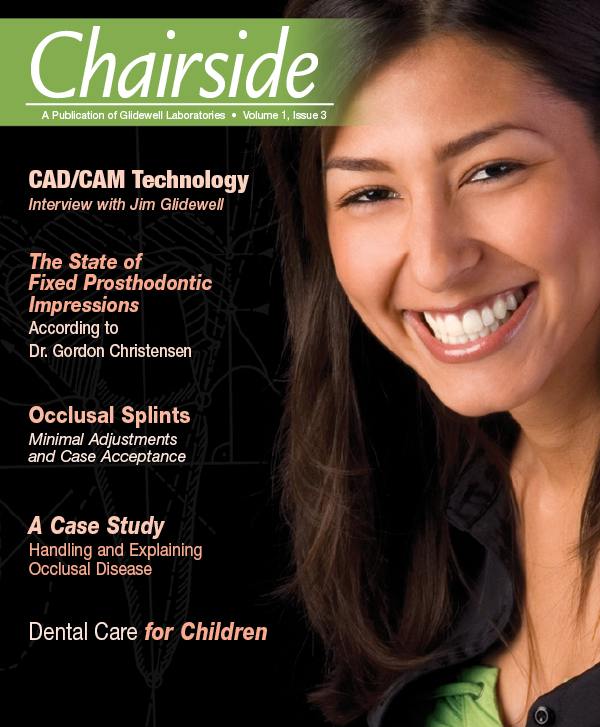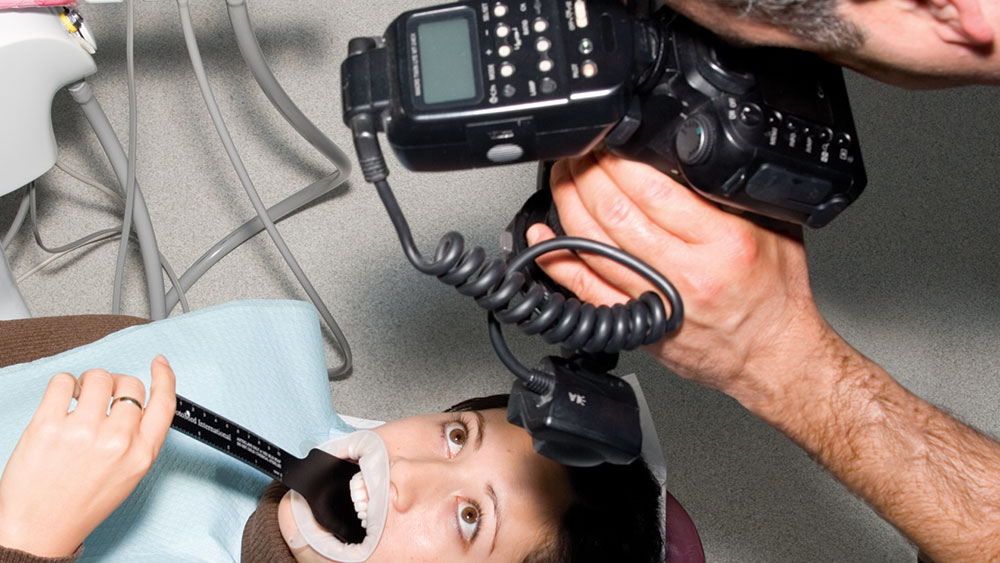Building the Cosmetic Component of Your Practice: A Path to Greater Profitability and Enjoyment

The dental profession presents an interesting dichotomy. In my travels over the past 25+ years, I have noticed that dentists seem to neatly divide into two distinct camps.
One group of dentists (let’s call them The Disgruntled) seems to treat their work as another day at the salt mine. Members of this camp seem to be very frustrated, are fundamentally unhappy with their profession, and are often counting down the number of days until retirement. The other group of dentists (let’s call them The Enthusiasts) are thrilled with their career choice and genuinely enjoy their work. Members of this camp derive a great deal of satisfaction (monetary and emotional) from their work, and they truly enjoy coming to work each day. What is the distinction? How could there be such a radical difference in how these two camps feel about their profession?
I’m sure there are a myriad of reasons, but I think it has a lot to do with the nature of the treatment provided. The Enthusiasts are enjoying themselves because they are absolutely changing people’s lives. What better way to change a person’s life than by helping them have the smile of their dreams? This article will outline how to build the cosmetic component of your practice, which will go a long way toward placing you firmly in the Enthusiast camp!
In this article, I will discuss five specific steps to follow to develop the cosmetic component of your practice to full potential. These five steps are:
- Make a Massive Commitment to Cosmetic Continuing Education
- Make Whitening a Core Element of Your Practice
- Remove Money as a Barrier for Your Patients
- Use Digital Photography for Patient Education
- Master Case Presentation
Become a CE Junkie
The first step to developing the cosmetic component of your practice to full potential is to make a massive commitment to cosmetic continuing education. There are no shortcuts here. Our profession is changing so radically with regard to dental materials, armamentaria and techniques that it is imperative that you invest in yourself by taking extensive continuing education. Whatever your state requirements for CE are, they are not enough! The Disgruntled take the minimum number of hours necessary to maintain their dental license. The Enthusiasts embrace the concept of continuous learning and are constantly attending the best CE courses.
The reason why this step is so important is that you simply must have the product on your shelf before you can sell it to your patients. You need to be able to confidently look the patient in the eyes and say, “Yes, I understand your concerns and I can help you have the smile of your dreams!” The best way to develop this confidence is to become so well trained that you recognize the problems and immediately know how to address them. The best cosmetic CE courses will provide you with these skills and more! Our profession has some terrific instructors who will share everything they know if you will simply make the effort to attend their courses.
One of the most powerful by-products of taking good CE courses is that you improve your diagnostic acumen. A client of mine recently viewed Dr. Michael DiTolla’s “Prep & No-Prep Comprehensive Porcelain Veneer Techniques” DVD. My client told me after viewing this course that he now sees what he simply was not seeing before. As a result, he is confidently diagnosing more cosmetic cases, and we are seeing a subtle, but important, shift in his case mix. He is doing more cosmetic cases than he has ever done before.
Embrace Whitening
One of the most powerful ways to build the cosmetic component of your practice is to make whitening a core element of your office. People want whiter teeth. A recent USA Today survey reported that 85% of the population would like to improve their smile by having whiter teeth. Yet few offices are even close to maximizing their whitening potential.
I like to think of whitening as the gateway to doing more ideal care. Whitening makes better patients! Hygienists tell me that they often notice that their patients brush better, floss more often, and become more faithful about keeping their appointments after whitening their teeth. It makes sense. Patients take a greater interest in their teeth after whitening.
So that we can accommodate as many patients as possible, I recommend that my clients offer both tray whitening and chairside whitening. We can offer tray whitening if money is more of a concern and the patient is not in any particular rush. We’ll offer chairside whitening if the patient wants immediate results (most do) or just wants the entire process done by professionals. Following are four specific things you can do to make whitening a core element of your practice.
- Ask all patients if they would like whiter teeth. Don’t overlook the obvious. Try a soft approach like, “If there was a simple way for you to have whiter, brighter teeth, would you be interested?”
- Take a shade match at the beginning of all hygiene appointments. Show the patient their shade on a chromatically ordered shade guide. This is an excellent way to visually demonstrate to patients the opportunity to have whiter teeth.
- Set up a culture in your practice to provide whitening. People are impatient — figure out how to deliver whitening today.
- Recommend whitening as an elective part of the treatment plan for any patient having restorative treatment. You or your team members can suggest that now would be an excellent time to whiten as we could get a great foundation color that the doctor could then match the restorations to.
Outsource Financing to Make Ideal Care Affordable
A next step to maximize your cosmetic potential is that you must develop a system to remove money as a barrier for your patients. Let’s face it: Cosmetic treatment can require a considerable investment from the patient. If the only payment options you have for your patients are cash, check or major credit card, you will frustrate a great number of potential patients because they cannot pay with those limited options.
Plastic surgeons have learned this lesson. In 2005, 73% of elective cosmetic surgery procedures were provided to patients who have less than $45,000 per year in household income. And a significant percentage of these cases were financed via third party finance companies that made these procedures affordable for patients. Think about a typical smile design case of eight units of upper anterior porcelain veneers. Depending on your fee schedule, this case is likely to cost $8,000–10,000. That is a lot of money for most Americans. However, if that case could be financed at $180–200 per month, you will be making this care accessible to a huge segment of the population that could not obtain it otherwise. Ford or Chevrolet would not sell many cars if the only way consumers could pay for them was to write a check or put it on their credit card!
The solution to removing money as a barrier for your patients is to install a third party financing service such as CareCredit. This will allow you to provide affordable payment options yet do so in a manner that works for your practice.
Use Digital Photos for Patient Education
Another step to take in maximizing your cosmetic component is to use digital photography for patient education. We have all heard the saying that a picture is worth a thousand words. This axiom could never be more true than in the realm of patient education. You could talk about treatment until you are blue in the face, and often the patient’s eyes just gloss over and they are secretly longing for you to stop talking! However, show them a picture of their teeth and they often show immediate interest in improving their smile. I won’t belabor this point here, as a previous issue of Chairside® had an excellent article written by Dr. Tarun Agarwal titled, “Succeeding with Digital Photography,” covering how to incorporate digital photography into your practice. I encourage you to read this article and apply the concepts.
Master Case Presentation
The last step to build the cosmetic component of your practice is to master case presentation to your patients. This step is critically important. While this topic is worthy of an entire article on its own, let me suggest some concepts you can immediately apply.
Here’s how I might approach the new patient:
“Mrs. Jones, first of all let me welcome you to our practice. We love seeing new patients and I am thrilled that you have selected our office for your care. We will take great care of you! Let me start by telling you a little about our approach. Our goal, as with every new patient, is to help you enjoy great oral health. We want you to look good, feel good, have strong teeth and gums, and have a healthy, attractive smile for life. Does that sound good to you? The way I look at it is that it is my job as the dentist to identify every area of concern in your mouth and recommend what we can do to get you as healthy as possible. It’s your job as the patient to decide what, if anything, you want to do about it. Does that sound fair to you? You probably noticed that one of our team members took some photos of you earlier in the appointment. We take these photos because they help you and I to see things we can’t see with the naked eye. They really help me do a thorough diagnosis. Let’s take a look at those photos together. As I am pulling those photos up on the computer, let me ask you a question. As we are looking at the photos together, do I have your permission to identify every area of concern that I see?”
Now you can just do a simple slideshow of the five photos and identify problem areas and provide a treatment plan to address the issues. You will be absolutely amazed at how effective the photos are in motivating the patient to move forward with ideal treatment.
Consider the five recommendations provided in this article as a blueprint to follow to develop the cosmetic component of your practice to its full potential. Doing so will bring you great satisfaction as you help your patients get the smile of their dreams!
Gary’s life’s work and passion is helping dentists and their team members develop a more profitable and enjoyable practice. He is a sought after speaker at national and international dental meetings where his informational courses are often recognized as the most fun and entertaining courses that attendees have ever experienced. Gary is also the founder of Ride & Learn and Race & Learn, perhaps the most unique continuing education programs in dentistry today. Ride & Learn combines a Harley-Davidson motorcycle tour with dental CE, and Race & Learn combines high performance driving with dental CE. For more information about Gary’s courses, visit his websites at garytakacs.com or rideandlearn.com, or feel welcome to email Gary at gary@garytakacs.com.







